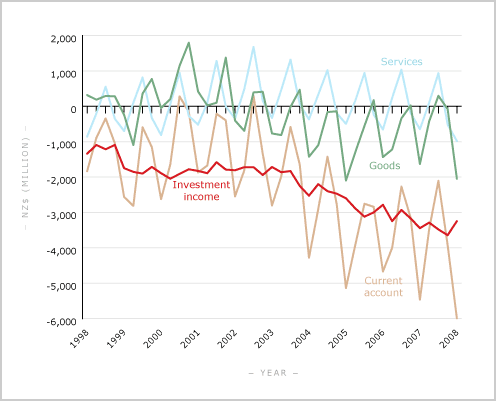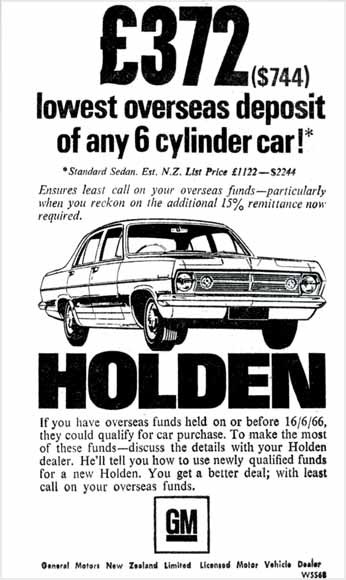Current account deficits Balance of payments Te Ara Encyclopedia of New Zealand
Post on: 16 Март, 2015 No Comment

Page 5 Correcting current account deficits
New Zealand governments have used various methods to try to correct current account deficits.
Restricting economic activity
To correct a current account deficit a government needs to boost exports, restrain imports, or increase net investment income.
From the 1880s the first policy practised by the government was to cut its own spending and encourage banks to restrict credit. This would reduce demand for imports and allow the country to meet its international interest payments.
In 1938, for the first time, the Labour government intervened directly by imposing controls on imports and foreign exchange.
Import controls
For most of the period between 1938 and 1992, import controls were usually implemented through a licensing regime: governments issued licences to individuals and firms authorising the annual import of a specific quantity of a type of good.
Though effective in reducing imports, the licensing regime could also be inefficient. Long waiting lists developed for the purchase of certain desirable imports such as cars. Licences were allocated on an arbitrary basis, rather than on the value that firms and individuals placed on an import. Worse, import licences could increase the likelihood of a payments crisis because, anticipating a licensing regime – or a more stringent one – individuals might import much more than their current requirements. This occurred in 1957 – import licensing had been suspended in 1952, but was reintroduced in 1958.
Exchange controls
Since foreign debts were usually settled in foreign currency, for most of the period between 1938 and 1984 New Zealand governments operated a system of exchange controls to maintain adequate reserves of foreign currency. Exporters had to convert their foreign earnings to New Zealand currency with the Reserve Bank, and, in turn, the bank supplied foreign exchange only for approved purchases. New Zealanders travelling overseas could only take limited amounts of foreign currency, and no bank outside New Zealand would deal in New Zealand currency.
Travel money

In the 2000s most New Zealanders travelling abroad used credit or bank cards to obtain local currency. But in the 20th century the most common way to obtain local money was by using travellers’ cheques. These were issued by banks in New Zealand before the traveller left, and so provided an easy mechanism for the government to control how much money went overseas with holidaying Kiwis.
Devaluation
A more important and effective tool New Zealand governments used to correct payments imbalances was to devalue the country’s currency against foreign currencies. This made New Zealand exports cheaper and therefore more competitive in international markets, and it discouraged imports by making them more expensive in New Zealand. Usually, New Zealand assets also became more attractive to foreign investors following devaluations, and the resulting capital inflows made a crisis less likely. However, devaluations often triggered inflation (general price rises) as import price increases were passed on to consumers.
Floating currency
The New Zealand dollar was floated in 1985. This should, in theory, ensure that balance of payments crises no longer occur because the currency would self-correct. For example, a high demand for imports increases the demand for foreign currency to pay for these imports. This higher demand increases the price of that currency in New Zealand dollars – a depreciation of the New Zealand dollar. Consequently, a balance of payments deficit, which might have been created by the high import demand under a fixed exchange rate, may be pre-empted by a depreciating New Zealand dollar making the imports more expensive.
In practice, balance of payments deficits have persisted, but New Zealand has been able to borrow to cover them, avoiding payments crises of the kind that were common before the 1980s.














